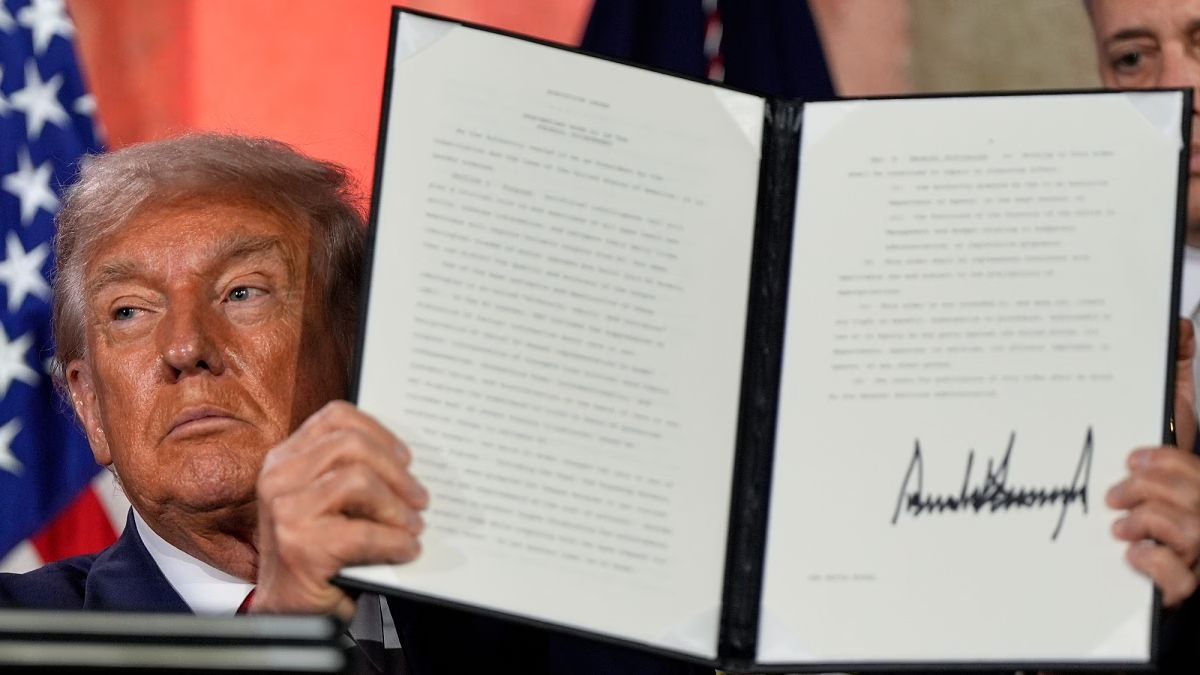<
div style=”–widget_related_list_trans: ‘Related’;”>
ADVERTISEMENT
In his latest declaration, US President Donald Trump has announced a vision to outlaw “woke AI” within the US government, position the country as a leading AI exporter, and ease existing environmental controls on AI-related technologies.
These declarations were coupled with the signing of three executive orders related to artificial intelligence, integral components of the nation’s AI strategy.
Breaking down the key points:
1. Restriction of Woke AI
The order named “Eliminating Woke AI From Government Operations,” prohibits federal government contracts for AI models deemed not “ideologically neutral.” It criticizes concepts such as diversity, equity, inclusion (DEI), and unconscious bias as “destructive ideologies” that can skew AI output.
While this move aims to safeguard free speech and American values, the exclusion of DEI and related information could inadvertently undermine objectivity in AI, making it less impartial.
David Sacks, a former PayPal executive and currently Trump’s chief AI advisor, has been vocal about his concerns regarding the perceived political leanings of AI, which became a focal point following Google’s AI image generator’s depiction of the American founding fathers as Black, Asian, and Native American individuals in February 2024.
Critics argue this “Black George Washington” episode symbolizes AI’s potential for political skewness, a viewpoint shared by influencers such as Elon Musk, Marc Andreessen, JD Vance, and Republican lawmakers.
2. Prioritizing Global Leadership and Deregulation
The initiative emphasizes cultivating AI innovation and its widespread use, advocating for the removal of regulatory hurdles that could impede AI adoption across industries and government sectors. Trump pledged that the US will assume global leadership in artificial intelligence through this strategy.
Yet, there’s also an objective to steer AI growth in alignment with the industry’s desire to counteract perceived liberal leanings in AI systems like OpenAI’s ChatGPT or Google’s Gemini.
3. Accelerating AI Infrastructure Development with Reduced Environmental Restrictions
A primary aim of the strategy is to expedite the permitting process and reduce environmental regulation to foster the construction of new data centers and factories. This runs contrary to environmentalist views, as it relaxes laws such as clean air and water acts, which could increase carbon emissions contributing to global warming.
Trump previously aligned AI’s energy demands with his drive to exploit American energy sources, including gas, coal, and nuclear.
While many tech giants are actively constructing data centers in the US and globally, the surge in demand for energy infrastructure due to AI growth points to increased fossil fuel dependency, which is a contributor to climate change.
There is growing pressure on tech companies to transition to renewable energy sources, as highlighted by United Nations Secretary-General Antonio Guterres, who appealed for data centers to be entirely powered by renewables by 2030.
The plan also includes strategies to curb states from imposing stringent AI technology regulation and to enforce a unified federal standard.
“We need one sensible federal standard that supersedes all state laws to avoid entanglement with 43 states simultaneously,” according to Trump.
Advocacy for a Citizen-Centric AI Plan
A wide array of groups, from labor unions to environmental justice advocates, have expressed opposition to Trump’s support for an industry-centric AI policy. They urge for a more citizen-focused “People’s AI Action Plan” that prioritizes the interests of the American populace.
Experts in AI safety like Anthony Aguirre, executive director of the Future of Life Institute, while acknowledging the risks AI poses, recommend further action from the White House to safeguard citizens and workers.
“The White House’s reliance on self-regulatory commitments from leading AI companies is not enough to mitigate serious accidents or prevent loss of human control,” Aguirre remarked.
“Our experience suggests that Big Tech’s promises alone are insufficient to guarantee the desired outcomes.”
Source: https://www.euronews.com/next/2025/07/24/no-woke-ai-more-energy-hungry-data-centres-and-winning-the-ai-race-inside-trumps-ai-action




